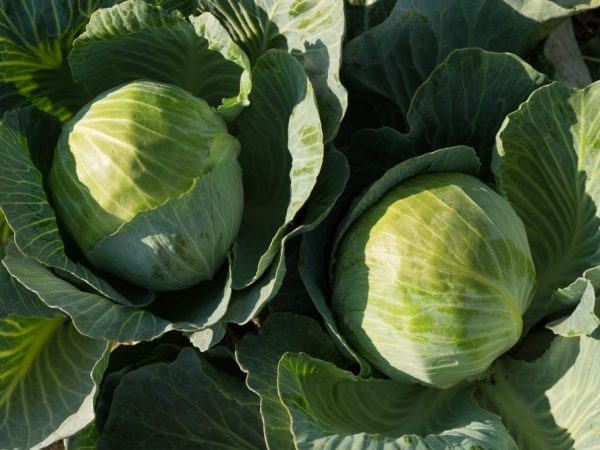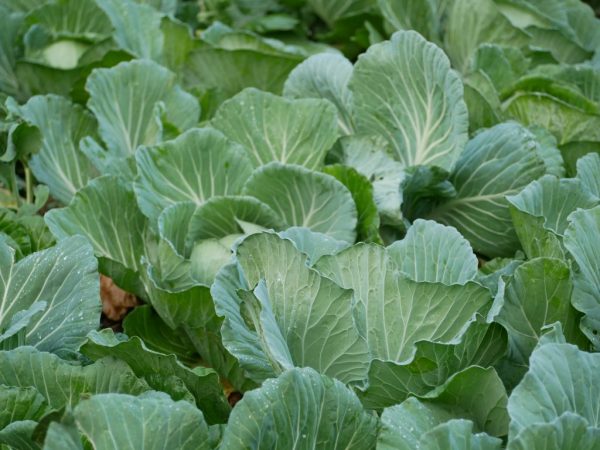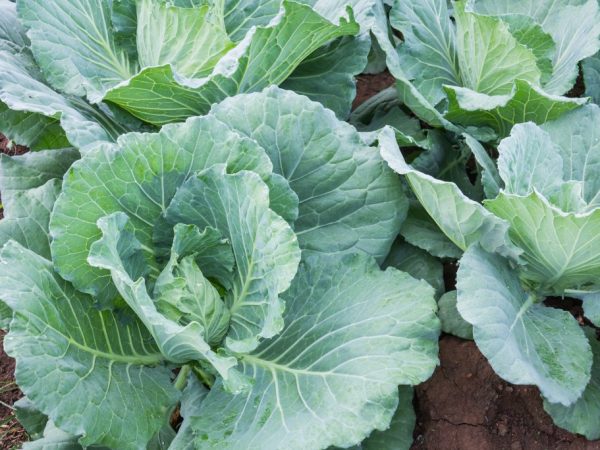Characteristics of cabbage varieties Bronco f1
Cabbage Bronco f1 is a hybrid of mid-season white cabbage, bred in the Netherlands. Currently, hybrid seeds are in demand both in mass agricultural production and in home cultivation.

Characteristics of cabbage varieties Bronco f1
Characteristics of Bronco F1 cabbage
Variety Bronco F1 has a medium-early ripening period. The time period from planting seedlings in open ground to collecting full-fledged fruits is from 80 to 90 days, and the time from the appearance of the first shoots to harvesting is from 115 to 125 days.
Bronco cabbage, according to its characteristics, is an f1 hybrid with increased resistance to stress: frost, drought, sudden temperature changes. The amount of harvest per hectare of land ranges from 520 to 780 centners. Shelf life in the basement is 3 months after harvest.
Description of the head
Cabbage leaves are medium in size, slightly raised, flat, rounded, smooth around the edge. The surface has a slight blistering, medium wax coating. The color is dark green with a gray tint.
Description of a head of cabbage variety Bronco:
- round shape;
- the surface is smooth;
- average density;
- average weight - from 2 to 3 kg;
- light green color;
- the color on the cut is white;
- internal stump is medium;
- the outer stump is short.
Application
According to the description, Bronco cabbage tolerates thermal processing well and is suitable for consumption both fresh and cooked. Recommended for pickling and preservation.
Care
Sowing of Bronco seeds takes place in a pre-prepared soil of humus and sod land (1: 1) and a small amount of peat. This soil can be purchased at specialty stores or mixed by yourself.
Seedlings are grown from the third decade of April to the first decade of May. The ripening period of seedlings is 45-50 days.
Temperature
The first shoots appear 5 days after sowing. The air temperature during this period should be between 6 and 10 ° C.
When forming seedlings, the temperature is increased to 15-16 ° C during the day, and by the evening it is reduced to 10 ° C. Watering is carried out as the moisture evaporates.
Lighting

The plant needs good lighting
The seedling of the hybrid is a very light-loving plant. With short May daylight hours, the seedlings do not receive enough light, they use artificial lighting: phytolamps. Lighting time - 12 hours a day.
Picking
2 weeks after the appearance of the first shoots, Bronco seedlings dive. Strong seedlings, along with the earth, are transferred to other containers. Plastic cups, cassettes are suitable for this.
You can do without picking when the seeds were originally planted in a separate container. In this case, the seedlings are simply thinned out, removing weak and small shoots.
Hardening
In order for the seedlings to take root well in the open field, they are hardened before planting. The first few days in the room open the window, then every morning the plant is taken out into the fresh air. The last week before planting, the cabbage is on the street.
At the end of May, after 45 days from the moment the first shoots appear, the length of the seedling should be 15 cm, it should have 4-5 leaves. After that, seedlings are transplanted into open ground.
Watering
The Bronco cabbage variety is able to withstand high air temperatures and develop in the absence of moisture for a long time, but regular watering is needed to obtain a good harvest.
- On average, under normal weather conditions, cabbage is watered once a week. On hot dry days - every 2-3 days.
- When forming a head of cabbage, the amount of watering liquid is doubled. The volume of water per 1 sq. m is approximately 10 liters.
- Water for irrigation should not be cold, such water significantly reduces growth and causes disease. Plants are watered with warm and settled water.
- Watering is stopped a couple of weeks before harvesting to avoid cracking the cabbage heads.
- Before watering, the soil is loosened to improve air and moisture access to the root system. After watering, the cabbage is spud.
Top dressing

Top dressing promotes the development of heads of cabbage
Regular feeding of hybrids promotes the maturation of strong, healthy heads of cabbage. For the entire ripening period, 4 compulsory dressings are carried out:
- Immediately after the appearance of the first shoots, the plant is sprayed with a solution of water (1 l) and any preparation (1 g), which includes nitrogen, phosphorus, potassium.
- Before hardening, the seedlings are watered with a solution of water (10 l), potassium sulfate (15 g) and urea (15 g).
- 14 days after planting in the ground, the plant is watered with a solution of water (10 l), superphosphate (5 g), potassium (5 g) and urea (5 g).
- 2-3 weeks after the third feeding, watered with a settled solution of water (10 l) and manure (500 g).
Also, during the period of maturation of the heads of cabbage, foliar feeding is carried out to improve the synthesis of biologically active substances. This requires spraying the plants with a solution of water (10 l) and boric acid (5 g).
Fertilization of cabbage is carried out in the evening, after watering.
Pests
Pests that infect the culture:
- aphid;
- scoop;
- slug;
- leaf beetle;
- cabbage fly.
A large number of chemical and biological agents are available for pest control. Chemicals, such as Fury, Iskra-M, are used before head formation begins. "Bicol" gets rid of aphids, "Nemabakt" - from cabbage flies.
Planting seedlings next to mint, marigolds, nettles and herbs is also a good pest control method.
Diseases
The Bronco cabbage variety is immune to thrips and fusarium.
Diseases to which the plant is susceptible:
- black leg - rotting of the lower part of the seedling stem;
- keela - wilting and dying off of leaves, cessation of growth;
- white rot - the appearance of mucus on the outer leaves of the head of cabbage.
A diseased plant cannot be treated, it is removed and destroyed. To prevent this from happening, processing is carried out in a timely manner.
Conclusion
Bronco is a mid-season cabbage variety that is distinguished by good yield, resistance to prolonged drought, diseases and unpretentious care. It is suitable for fresh consumption and preservation. To obtain a rich and healthy harvest, it is important to timely process the plant from pests and diseases and maintain comfortable conditions for the development of the culture.


